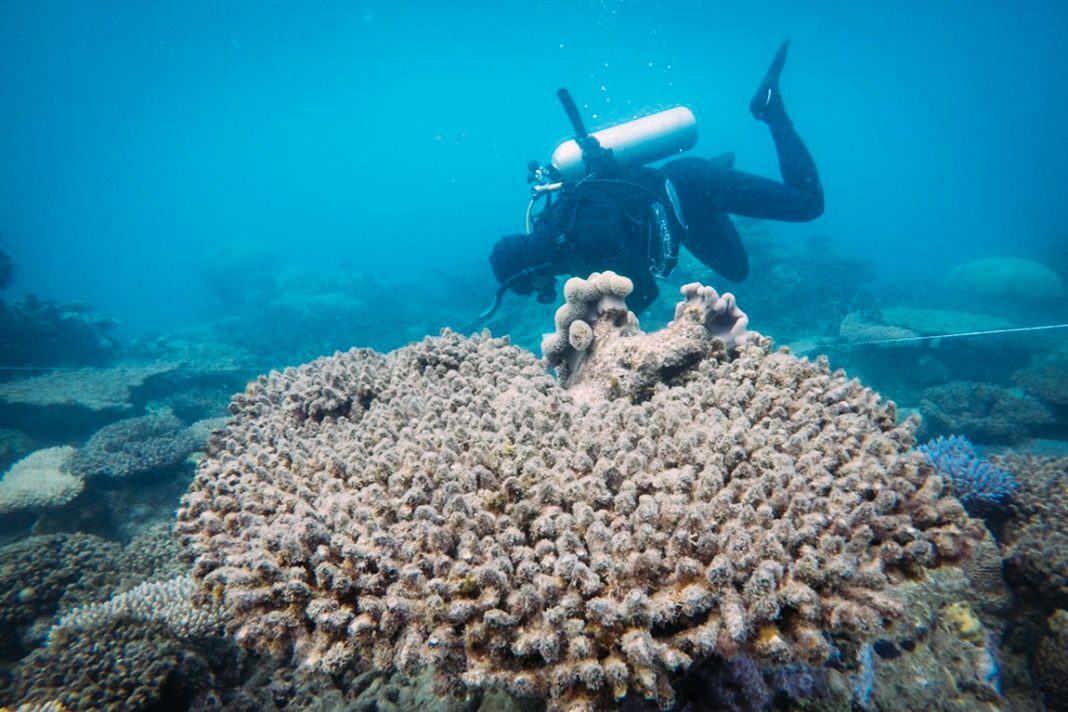By: Agnetha de Sa, Peak Associate
‘Reefs of hope’ may help protect coral reefs from climate-change impacts
In their published article Seeking resilience in marine ecosystems, SFU alumna Emily Darling, and marine biology professor Isabelle Côté suggest a solution to help mitigate the impact of climate change on coral reef systems.
Some of the hardest hit ecosystems across the globe due to climate change are the world’s coral reefs. Bleaching is one such consequence, where a coral becomes damaged and rejects the algae which it normally hosts from its body, resulting in a brittle white appearance. This condition can be induced by factors such as pollution, extreme low tides, excessive sunlight, and rises in water temperature. Without the algae, the afflicted coral eventually starves.
Over the past few decades, it has been noted that coral reefs do not have as much time to recover safely from bleaching damage as they once did. While at one time coral reefs had roughly 25–30 years to recuperate, modern coral reefs die within six years if they cannot heal from the bleaching damage by then — ordinarily, it takes at leat 10–15 years for a reef to recover properly. Thus, in order to protect and help the world’s coral reef systems, scientists around the world have undertaken a variety of methods to help coral become resilient such as selective breeding or genetic engineering.
However, Darling and Côté present an alternative strategy in which resources are spent locating and preserving coral reefs that seem to face less danger from bleaching and predators, dubbed “reefs of hope”. Taking advantage of ocean currents, these scarce reefs can transfer some of their coral larvae to other reefs with a greater need for the increased numbers to combat climate-change damage.
The researchers advocate for this method over more mainstream methods of attempting to preserve coral reefs because, as Darling says, “Right now, it isn’t realistic to think that we can cost-effectively restore high-diversity reefs at scales of hundreds or thousands of square kilometers using these methods.”
Darling and Côté acknowledge that fighting greenhouse gas emissions will be the key to protecting coral reefs around the world, but in terms of current available actions, they state that “finding and protecting even the smallest of resistant refugees [reefs of hope] is an urgent priority for global conservation efforts.”
Sea sponges may hold the key to future antiretroviral therapies
SFU Faculty of Health Sciences researchers Ian Tietjen, Zabrina Brumme, Mark Brockman, and colleagues have discovered chemical compounds derived from sea sponges that can be used as antiviral substances for HIV. The results were published in a study in Antiviral Research.
Tietjen, Brumme, Brockman and colleagues worked with 252 different compounds, taken from marine sponges and microorganisms, to determine what antiviral features each of them might have. Six of them demonstrated antiretroviral capabilities. Among these compounds was bengamide A, which the research group found was able to mitigate the effects of HIV when used in the appropriate concentration.
Bengamide A works very differently from most established antiretroviral medicines, despite achieving a very similar effect. Tietjen predicts that the fresh perspective offered by this uniqueness can help update our current scientific understanding of how viruses work, paving the path towards the innovation of new treatments for HIV and other viral infections.
SFU News cites the following organizations as supporters of the research: “the Canadian Institutes of Health Research, Grand Challenges Canada, the International Development Research Centre of Canada, the Canadian Foundation for AIDS Research, and the Canadian HIV Cure Enterprise.”




